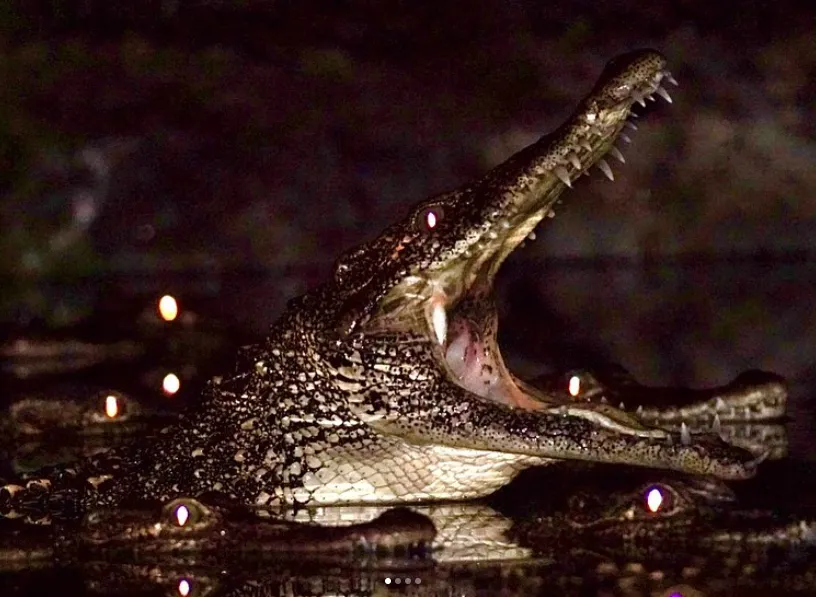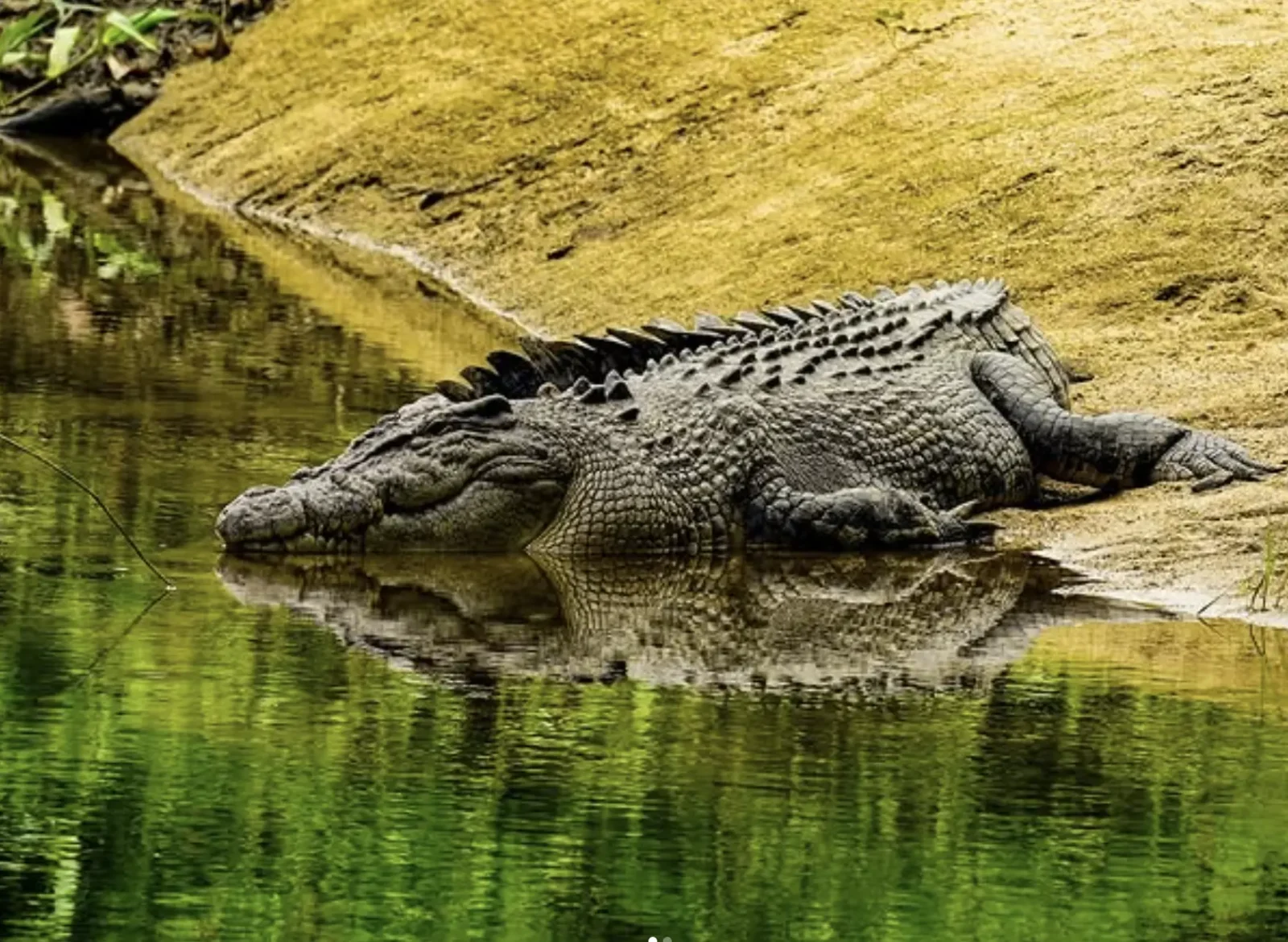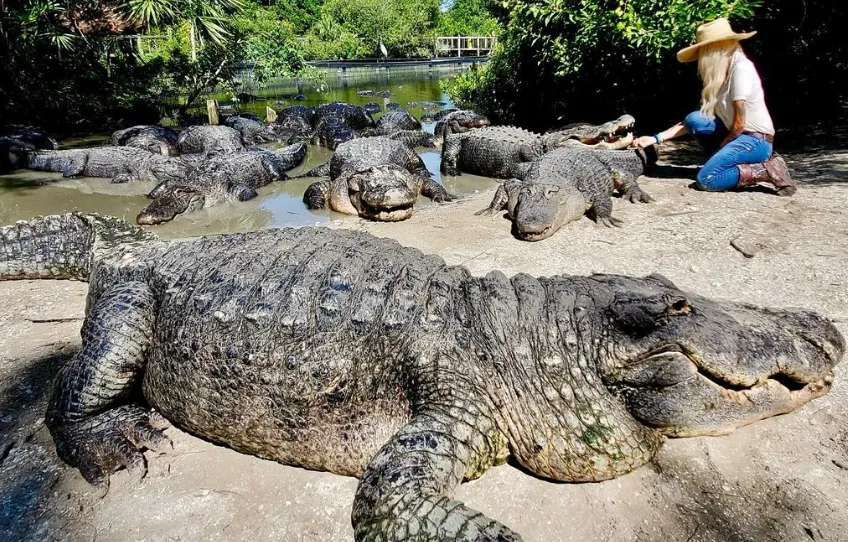Facts About Saltwater Crocodiles
You think dinosaurs are extinct? Well, you haven’t met a saltwater crocodile. These blokes are as old as the earth — all scales, snouts and serious bite force. I still remember the first time I saw a big male slide into a billabong up near Cahills Crossing. If you’re curious, here are some facts about saltwater crocodiles: Saltwater crocodiles (Crocodylus porosus), also known as estuarine crocodiles, are the largest living reptiles on the planet. Found across Northern Australia, Southeast Asia and as far west as India, these big buggers have been ruling the waterways for millions of years. But don’t let the name fool you — they’re not just beach bums. Salties are just as happy in freshwater rivers, brackish mangrove swamps and coastal waters.
Crocodile Habitat
Despite the name, salties aren’t fussy about water type. They’ll cruise through freshwater rivers, billabongs, swamps, river deltas and even the open sea. That last one stumps a lot of people — but yep, saltwater crocs are pretty good swimmers and can travel hundreds of kilometres.
In Australia you’ll find them across the tropical north: from Broome in Western Australia to Rockhampton in Queensland. Some of the best-known croc countries include:
- Kakadu National Park (NT)
- Mary and Daly Rivers (NT)
- Bhitarkanika Wildlife Sanctuary (India)
- Daintree River (QLD)
- Kimberley coast (WA)
- Cape York Peninsula (QLD)
Always follow the signs and assume any water in these regions could have a croc. Don’t risk it for a quick dip.


As Old as Dino
The Biggest Reptiles in the World


Crocodiles Lay Eggs
The Strongest Bite on Earth
They Can’t Sweat
Top of the Food Chain
They Can Only Eat Above Ground


Faster than Speedy Gonzales
Marathoners — Not Just Sprinters
Temperatures Determine Their Gender
Protected Animals


Camouflage
Sleep with One Eye Open (Literally)
These prehistoric lizards have a party trick — unihemispheric sleep. That means one half of their brain can sleep while the other stays alert. They’ve been seen resting with one eye open especially when surrounded by threats or during agonistic behaviour (like territory disputes). Handy for guarding nests — or just being croc-level paranoid.
Baby Crocs and the Long Crawl to Survival
“Death Roll” Move
FAQ
Where do saltwater crocodiles live in Australia?
They’re found along the northern coastline — from WA’s Kimberley to the Top End of the NT, and over to Far North Queensland, especially in Australian freshwater swamps and brackish mangrove swamps.
Can saltwater crocodiles live in freshwater?
How long can a saltwater crocodile live?
Up to 70-100 years in the wild. Some in captivity have lived similar ages.
Are saltwater crocodiles endangered?
What’s the difference between a freshwater and a saltwater crocodile?
Freshwater crocs are smaller, have a narrower snout and are generally not aggressive to adult humans. Saltwater crocodiles are the biggest crocodile species, with a bad temper and the strongest bite of any animal.
Popular Articles

Up in the Northern Territory, crocs are part of the furniture. Call it the price of living in a place where the natural habitat still

What boats do crocodile cruises? If you’ve ever sat in the Top End’s midday heat and heard the words, “Let’s go find some crocs,” you

You’ve heard of Kakadu National Park, right? But here’s the locals’ secret: if you want the most saltwater crocodiles, most birds and pristine wetlands without

Northern Territory crocodiles aren’t just a thrill — they’re part of the cultural fabric, environmental balance and the stories that shape this rugged part of

If you’re looking for top places to see a crocodile in Australia, whether you want to snap crocodile photos of a 5-metre beast basking in

Species of Crocodiles in Australia That’s when you realise — crocodile species in Australia are not to be underestimated. Not all crocs are created equal.

